It’s no secret that life has a way of testing us with unforeseen challenges. While it’s impossible to avoid every obstacle altogether, working as a team can make these trials far easier to overcome. When several individuals combine their strengths and work together effectively, their combined efforts can lead to solutions that no one person could have achieved alone.
When team members play to each other’s strengths, they’re able to function as a collective unit that’s greater than the sum of its parts. This dynamic, known as collaborative effort, not only increases productivity but also fosters a sense of common purpose. By working together seamlessly, a team’s resilience grows, enabling it to tackle challenges with greater confidence and creativity. In this article, we’ll look at some of the key benefits and examples of teamwork.
Let’s get right into it!
What is team effort?
The boring definition would be any incidence of cooperation between two or more people working on the same task. However, there’s a more inspiring answer to be had.
A group of people working together in a cohesive manner towards a common goal, supporting each other relentlessly to create a positive working atmosphere. At its core, team effort is the alignment of individual skills and strengths, seamlessly blended into a unified, collective drive that supports a common mission.
When we talk about team effort, it’s not just about working side by side – it’s about creating a synergy where each person’s contribution increases the overall impact. This collaborative effort fosters an environment where people not only work together but are actively invested in each other’s success.
That is team effort.
The benefits of team effort
Builds trust
It’s essential that your team members trust each other. Without trust, a team will struggle to complete projects. Encouraging team effort in your workforce will give employees chances to prove their competence and dedication to one another.
Nourishing this mutual confidence can be a game-changer that optimizes the workflow to never-before-seen levels. Team members will be able to focus on their own tasks without having to worry about everyone else pulling their own weight.
Furthermore, trust can also help new ideas emerge since open communication and great collaboration skills will be standard practice at the office. This is especially important when the solution to a group project may not be immediately obvious.
When team members develop trust, they’re also more likely to offer support in times of personal or professional challenge, reinforcing a working relationship that extends beyond work tasks.
Faster turnarounds
As you would expect, multiple people working together on the same project are bound to get it done faster than someone who’s trying to carry all the weight on their own two shoulders.
Working together also teaches employees that their performance can impact the entire team, for better or worse. Your individual team members are less likely to slack off if they know that a loss will be attributed evenly to everyone on the team.
Let people fight for something greater than themselves and you’ll be surprised just how far empathy can drive our species.
Creativity
Multiple people working together on the same team is the best way to foster an aura of creativity. Those who work solo are bound by their static beliefs and any false assumptions that they may be working with.
Conversely, groups are able to bypass this by combining the different perspectives and opinions that each team member brings to the table. The end result is solutions that are free from bias and far more effective at the task at hand.
Whether you’re a software developer, writer, or graphic designer the possibilities for collaboration are endless and you’ll find that the end result will be well worth it. We at Chanty actually let every employee contribute to our content if they so choose (more on that below).
In addition, teams often take risks that individuals might shy away from, leading to more breakthrough ideas and innovations. Collaboration allows a variety of approaches to be tested, fostering a culture of experimentation and adaptability.
Collective learning
In the same way, that team effort lets your employees combine their individual strengths to enhance the overall team performance, it also helps them learn as a unit and grow their knowledge collectively.
Someone working solo will learn things as they progress through their career but this information may stay with them indefinitely In contrast, teams that collaborate will learn these lessons together and be able to improve all at once.
This lowers the learning curve and helps distribute the knowledge evenly across the entire team. The skills that are shared between collaborators will also help them in their solo projects for the rest of their careers.
Lastly, collaboration also leads to enthusiasm to learn that is not often found in solitary work. This is partially due to the fact that sharing discoveries with teammates is always exciting and that gratifying sense that you contributed to the success of a project motivates you to keep learning.
Working together on a project creates an enthusiasm for learning that solitary work usually lacks. Being able to share discoveries with the rest of your team excites employees and fosters both individual and team knowledge.
Examples of team effort
Collaborative content
Let’s start by speaking from personal experience. Here at Chanty, we all contribute to the article during the content creation process. We don’t care if you’re an executive or an intern, a good idea is a good idea.
Whether you’ve been working with us for years or it’s your first day, you always have the opportunity to contribute to one of our pieces and help make it better. This democratic content creation process is what helps keep our insights fresh, diverse, and unbiased.
This approach to content creation is a perfect example of how a collaborative effort can improve the final product by incorporating different viewpoints and expertise. It’s also a great way to foster a culture of open communication where everyone feels heard and valued.
This sets the stage for collaboration and the tendency to work together quickly spreads to other areas of our company. The key here is to establish a company-wide shift towards working together so everyone is on the same page. When team members are encouraged to contribute openly, it creates a greater sense of unity, which is essential for a cohesive team effort on any project.
Brainstorming
Brainstorming sessions are a prime example of what can be accomplished through brainstorming. Directing the energy of every team member towards a single goal can create an unstoppable initiative.
The important thing to emphasize in brainstorming is that all ideas and concepts are valid. The “no idea is a bad idea” mantra holds true here. It’s also crucial that there’s no hierarchy during these brainstorming sessions.
There are no bosses, employees, or interns — just people with brains and ideas.
Not only does this use the collective knowledge of the entire team to find solutions to problems or chart the best approach but it also encourages participation which can lead to a pattern of employee engagement.
In fact, brainstorming is actually one of the best activities to open with if you’ve just created a new workgroup. This can break the ice between members who don’t know each other too well and get the momentum flowing from the very start.
Constructive criticism
Everyone has different strong suits and experiences. There’s no shame in asking for help and admitting that something is beyond your expertise. For instance, if a graphic designer is creating a software logo design it would be a good idea to talk to the developers to ensure the aesthetics match the function.
The inverse is also true. If developers are trying to create graphic design software then they could ask the graphics team which UI elements resonate with them and which ones aren’t as pleasing to their eyes.
This cross-departmental collaboration allows for a more holistic approach to problem-solving and ensures that all aspects of a project are well executed. The free flow of ideas and feedback in a non-judgmental environment ultimately strengthens the team and improves the quality of the final product.
This positive feedback loop ensures that expertise is shared across multiple departments. By fostering a culture of constructive criticism, you encourage collaboration and continuous improvement across the team.
How to encourage team effort
If you’re trying to nudge employees towards habitual collaboration then sending them to an escape room could be a good team-building exercise to start with. This puts them in a situation where effective teamwork is the only option to find a solution.
Beyond that, try to maximize their output rather than their input.
It’s important to remember that we shouldn’t focus on how long people work but rather how much they get done in the time they do. In his book Deep Work, author Cal Newport says that the scientific consensus for our capacity to do Deep Work is at around four hours per day.
This means that having your teams be hyperproductive at the start of their day is good practice since it can compensate for the slower pace that they’re likely to fall into in the afternoon which is a period more appropriate for shallow work.
Shallow work can be minor tasks like replying to emails or going through our project management software — things that make us feel productive but don’t accomplish any meaningful goals. Encouraging team effort during deep work moments ensures that employees are supporting one another and achieving greater focus.
Deep work, however, can be things like creating content or researching. These are generally the tasks that we procrastinate on most since they seem more daunting. Friendly competition is one approach that can get employees to be productive and accomplish deep work in their mornings.
Every morning, divide the office into multiple teams with set goals. Whichever team finishes the most goals by lunch break gets free snacks (ideally healthy ones so they don’t have to deal with a sugar crash in the afternoon). This creates an environment where everyone contributes to the collective success of the team, reinforcing the value of working together.
For bigger team achievements and exceeding monthly goals, you can give the team bigger rewards than free snacks. For example, by using no investment merch creation tool, you can create some fun company merch and give it to the team.
If there’s a tie, the team that finishes first wins. The competitive spirit, coupled with teamwork, pushes individuals to do their best, knowing that their efforts will contribute to the overall success of the team.
After all, a recent study from psychologist Gavin Kilduff at New York University found that long-distance runners were able to improve their race times when competing against their rivals. This is just one example from his study on how competition boosts our performance.
Building a culture of friendly competition through collaboration can drive innovation and motivate people to achieve their goals faster.
Conclusion
It doesn’t take a rocket scientist to see that all the benefits of team effort are worth pursuing. Not only will it increase the efficiency at your workplace but also keep everyone motivated and remind them that their job matters. The ability to bring together different skills and perspectives through collaboration not only strengthens the team but also increases the overall productivity of the organization.
Of course, it’s much easier for your team to work together if they have the right tools. Using the right tools to support team efforts will ensure that all team members can communicate effectively and manage tasks seamlessly, increasing collaboration at all levels. Chanty helps your employees collaborate, communicate, and add value to your business from a single platform. With Chanty’s intuitive interface, teams can stay connected, organize tasks efficiently, and foster a sense of community that empowers each individual to contribute meaningfully to collective success.
By continually fostering a culture of teamwork, you can create an environment where people feel supported, valued, and motivated to contribute to the team’s success. Remember, the strongest teams are those that work together, embrace diverse talents, and constantly seek ways to improve through shared knowledge and mutual respect.



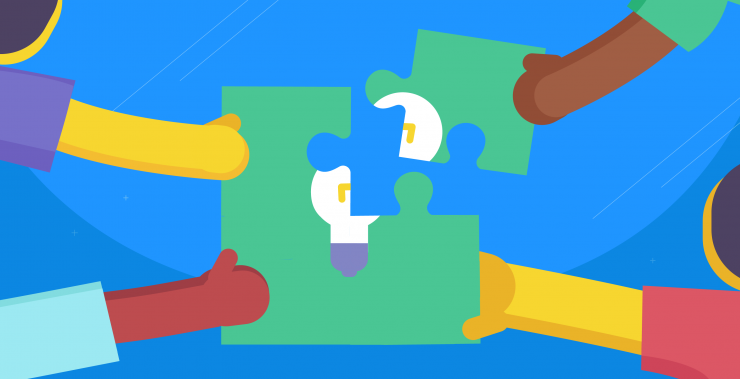
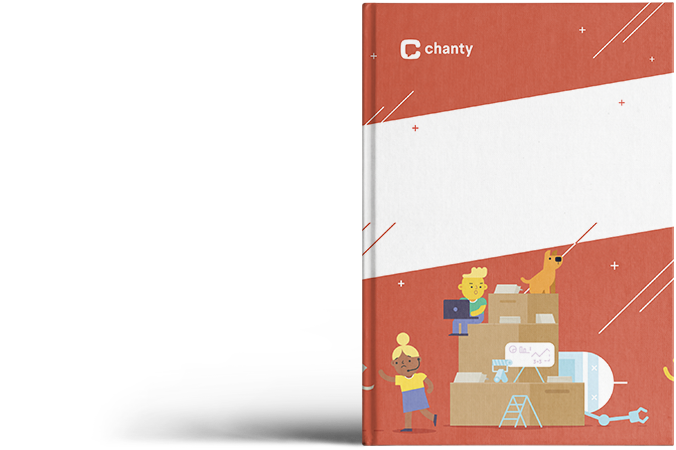
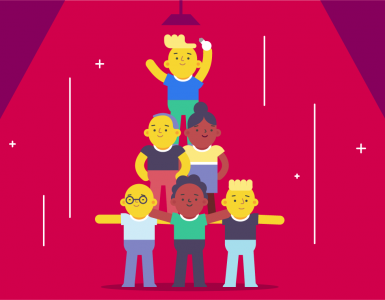
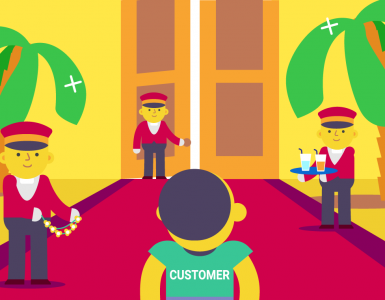
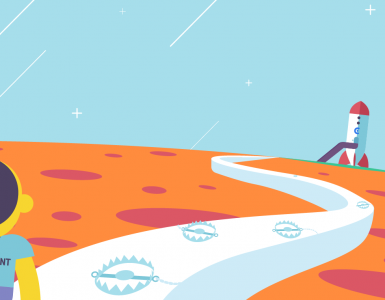


Add comment